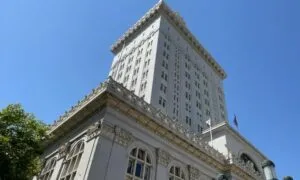On September 25, 2025, the Massachusetts Supreme Judicial Court (SJC) took a sweeping step that will reshape how law students and recent graduates gain courtroom experience and how the public benefits from their service
By rewriting Rule 3:03, the student practice rule, the state’s highest court has created a modern framework that emphasizes training, supervision, and access to justice. The updated rule will take effect on August 1, 2026, giving law schools, courts, and legal aid organizations time to prepare.
We prepared a guide to what changed, why it matters, and how different stakeholders, from students to judges, can make the most of it. Let’s get right into it.
Table of Contents
ToggleKey Points
- Massachusetts SJC rewrote Rule 3:03, expanding supervised practice for law students and recent graduates, effective August 1, 2026.
- The rule emphasizes training, supervision, and access to justice, especially for underserved communities.
- Students and graduates can appear in more courts and agencies, with clear supervision and certification rules.
- Law schools, legal aid providers, courts, and students all need to prepare systems, curricula, and processes before rollout.
Why The Court Acted

Rule 3:03 has long allowed law students to represent clients in certain settings under supervision. But as the legal profession has changed, the old rule no longer matched the realities of modern training and public need.
In 2022, the SJC created a working group that included judges, court staff, law schools, and legal service providers.
After reviewing feedback from public comments in 2024, the Court issued a new version that also opens the door for innovative tools, such as legal tech for small claims CaseCraft.ai, to complement training and broaden access. New version also:
- Elevates hands-on training as an essential part of legal education.
- Expands opportunities for supervised student practice in more courts and agencies.
- Strengthens supervision and certification requirements to ensure consistency and client protection.
The Court deliberately set a long lead time before implementation. That pause allows schools to rework curricula, clinics to adjust supervision models, and courts to build administrative systems before the new rule becomes binding.
The Purpose of the New Rule
The revised Rule 3:03 opens with an explicit mission statement. It is designed to:
- Cultivate student knowledge and competency through practice.
- Promote public service by ensuring students and graduates serve without client compensation.
- Expand access to justice for indigent litigants and underserved communities.
Who Qualifies as a Student Practitioner
The rule carefully defines who may appear as a student practitioner. Two groups qualify:
- Currently enrolled law students who meet certification requirements.
- Law school graduates who continue practice while awaiting bar exam results or admission.
Key Definitions
- Direct supervision: The supervising attorney is physically present during proceedings.
- General supervision: The supervisor is available within a reasonable time but need not be physically present.
- Without compensation: Students cannot charge clients but may receive stipends or salaries from schools, nonprofits, government agencies, or firms.
Certification Process

Certification begins with the law school dean (or designee), who must apply to the SJC Clerk’s Office for Suffolk County. Applications must include:
- Student’s year in law school and program details.
- Placement information, including the supervising attorney’s name and BBO number.
- Attestation of the student’s character, competence, and training.
Course Prerequisites
- Completion of the first year of law school.
- Courses in legal research and writing.
- Enrollment in or completion of civil or criminal procedure, trial practice, and ethics or professional responsibility, or participation in clinical programs covering those areas.
Certification ends when the student leaves the placement, graduates, or is placed on academic probation. Schools may reapply if circumstances change.
Certification for Graduates Awaiting Admission
Graduates certified at commencement may continue representing clients if they:
- Apply promptly for the first available bar exam.
- Notify the Clerk’s Office of their exam application and later, the results.
- Continue in their existing placement or apply for certification in a new placement.
Certification ends if the graduate does not sit for the first available exam, fails that exam, or is admitted to practice. This system ensures continuity while protecting the public.
Where Students Can Appear

The new rule broadens the courts and agencies where student practitioners may appear, with supervision levels tied to coursework.
Trial Court Departments
Boston Municipal, District, Housing, Juvenile, Land, Probate and Family Courts
- Criminal cases: General supervision if two-thirds of law school is complete and criminal procedure coursework is finished. Direct supervision if enrolled in a criminal clinic.
- Civil cases: General supervision if civil procedure coursework is completed.
Superior Court
Students may handle:
- Criminal matters: Arraignments, bail arguments, suppression motions, plea hearings, probation violations, and some post-conviction matters.
- Civil matters: Motions and hearings, with coursework prerequisites.
Appeals Court & Supreme Judicial Court
Students may argue with:
- A 14-day advance notice and supervisor presence.
- Court permission via motion in certain cases.
- Graduates awaiting bar results may also argue if properly certified.
Administrative Agencies
Students can appear under supervision consistent with agency rules, making space for practice in hearings on housing, benefits, and education.
Notice of Appearance and Client Protection
Every student practitioner must file a notice of appearance disclosing their certification and supervisor.
The rule confirms that attorney-client privilege extends to student practitioners. Courts are required to grant reasonable continuances if a student’s certification status changes, ensuring clients are not disadvantaged.
Duties of Supervisors and Students
The rule sets out parallel responsibilities.
Supervising Attorneys
- Ensure student competence and preparation.
- Review and sign all filings.
- Be present where required.
- Face discipline if supervision lapses.
Student Practitioners
- Disclose student status to clients and secure consent.
- Follow ethical and procedural rules.
- Keep all required notifications current.
- Maintain professional conduct.
Quick Reference Table
| Topic | What the New Rule Says | Where to Look |
| Effective Date | Adopted Sept. 25, 2025, effective Aug. 1, 2026 | SJC Order |
| Purpose | Training, public service, access to justice | Section 1 |
| Who May Appear | Certified students and graduates | Sections 1–2 |
| Certification | Dean applies; prerequisites and attestation | Section 3 |
| Graduate Practice | Continue pending bar exam and results | Section 3.4 |
| Trial Courts | Civil and criminal with supervision levels | Section 4.2 |
| Superior Court | Specified matters under supervision | Section 4.3 |
| Appeals & SJC | Notice, motion, supervisor presence | Sections 4.4–4.5 |
| Agencies | Permitted under supervision | Section 4.6 |
| Client Protection | Privilege confirmed; continuances allowed | Section 4.7 |
| Supervision Duties | Review filings; ensure competence | Section 5.1 |
| Student Duties | Client consent, compliance, reporting | Section 5.2 |
What Stays in Place Until 2026
The current Rule 3:03 remains in force until August 1, 2026. That means clinics and organizations can continue operating under existing procedures while building toward the transition.
How Each Stakeholder Can Prepare

Everyone affected by the new rule has homework to do before August 2026. Here’s what schools, agencies, courts, and students should focus on.
For Law Schools
- Map courses so students can meet eligibility early.
- Align clinics with supervision levels and placement opportunities.
- Centralize certification requests and compliance tracking.
- Offer guidance for graduates navigating post-commencement practice.
For Legal Aid Providers and Agencies
- Design student roles around supervision rules.
- Place students in high-need dockets like housing and family court.
- Build internal review processes for pleadings and filings.
For Courts
- Establish clear practices for notices and appearances.
- Train clerks and judges on supervision levels.
- Apply continuance provisions when certification lapses mid-case.
For Students and Graduates
- Plan coursework to meet prerequisites before clinic placements.
- Clarify supervision requirements with host sites.
- Keep certification deadlines and bar exam notifications on track.
- Always disclose student status to clients.
Why Access to Justice Is Central
The SJC’s Access to Justice Commission has consistently pushed for ways to close the civil justice gap. The new Rule 3:03 supports that mission by embedding supervised student capacity into the system.
During the comment period, groups like the Massachusetts Bar Association and Boston Bar Association stressed the importance of maintaining broad opportunities for students in indigent defense and civil legal aid.
The final rule reflects those concerns by expanding practice settings and clarifying supervision requirements, rather than narrowing them.
What Success Could Look Like
@nat.the.studious.steno lil vlog from yesterday! #stenography #courtreportingskills #stenomachine #stenography #stenotype #stenocourt #courtreporterlife #courtreportergoals #courtreportereducation #courtreportertraining #stenographystudent #stenostudent #courtreportingschool #courtreportingschoolwork #stenographypractice #stenowriting #courtreporternews #stenocareer #stenocourtroom #stenographycommunity #stenographysupport #stenotips #stenographyjourney #stenographyprogress #stenolearning #stenographylearner #stenomachinefun #stenographydemonstration #StudyWithMe #AestheticStudy #CollegeLife #StudentLife #StudyGrind #TikTokStudy #ProductiveVibes #StudyMotivation #InspiringStudies #VisualLearning #CourtStenographerLife #StenographyStudent #CourtroomSkills #TypingSpeed #TranscribingJustice #LegalIndustry #CourtroomChronicles #StenoLife #TikTokSteno #fyp
- Housing and family courts see more supervised student lawyers helping unrepresented litigants.
- Juvenile sessions benefit from students assisting in bail arguments and hearings.
- Appellate practice is strengthened with structured student participation under strict safeguards.
- Administrative hearings gain additional advocacy capacity for issues like benefits and education rights.
Getting Ready for 2026
Between now and the effective date, organizations can build readiness by:
- Creating checklists for eligibility and supervision by docket.
- Developing template notices, disclosures, and supervisor certifications.
- Scheduling training modules for supervising attorneys.
- Tracking deadlines for bar exams and Clerk notifications.
The Clerk’s Office for Suffolk County will also issue guidance and publish forms well ahead of the transition.
Final Words
The Massachusetts SJC has redrawn Rule 3:03 to reflect a modern view of legal education and public service. By linking coursework to real practice, strengthening supervision, and emphasizing access to justice, the Court has given the state a framework that serves both students and the public.
With a full year to prepare before August 1, 2026, law schools, courts, and legal service providers have the chance to build programs that deliver skilled training while filling gaps in representation.
If stakeholders take that runway seriously, Massachusetts can scale up student practice in a way that truly makes the justice system more accessible.
Related Posts:
- America's Murder Capitals: A 2025 Ranking of the…
- Safest Countries in the World in 2025 - GPI…
- 26 Most Dangerous Cities in US - Updated Statistics for 2025
- Ivy League Schools - Opportunities and Admission…
- Capital Cities in Europe: Top Destinations For You…
- The Hidden Boundaries of Free Speech in Modern Democracies








